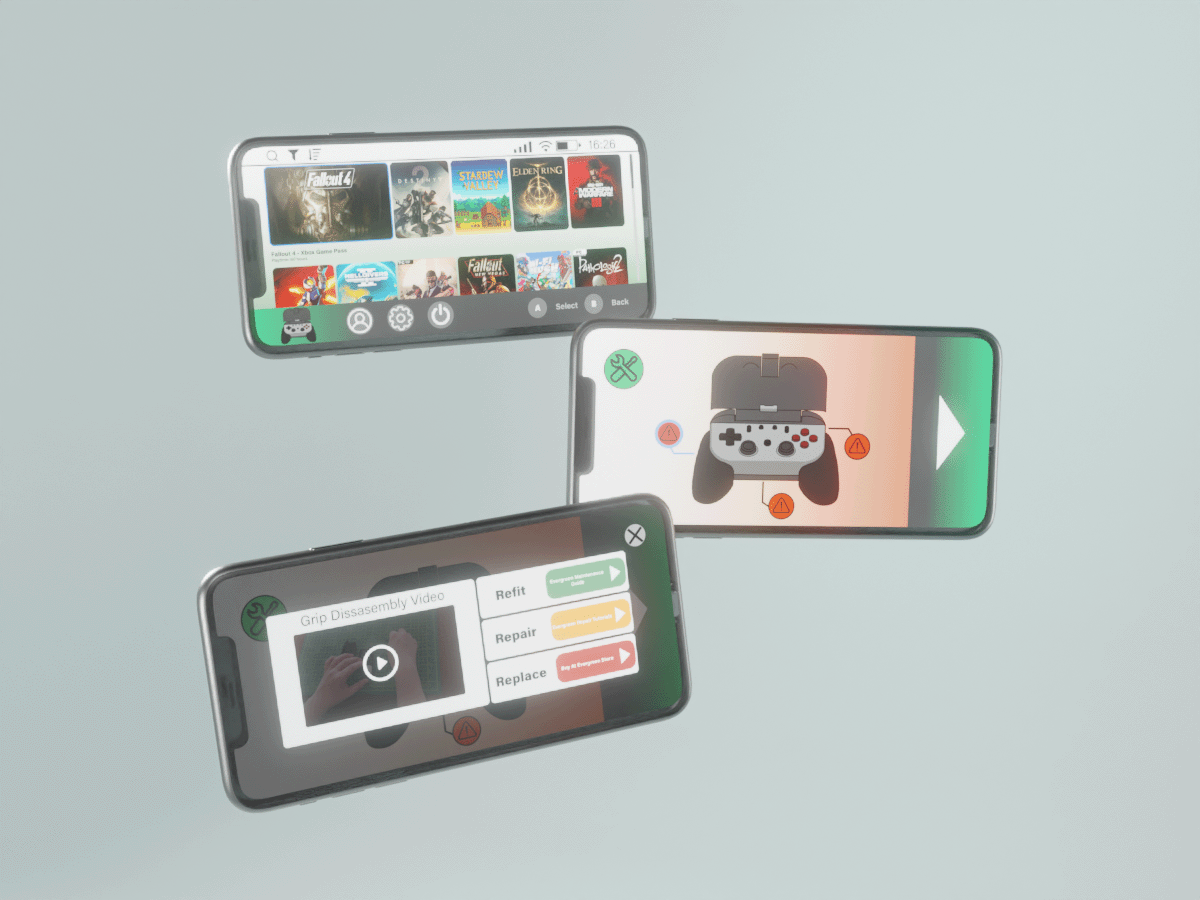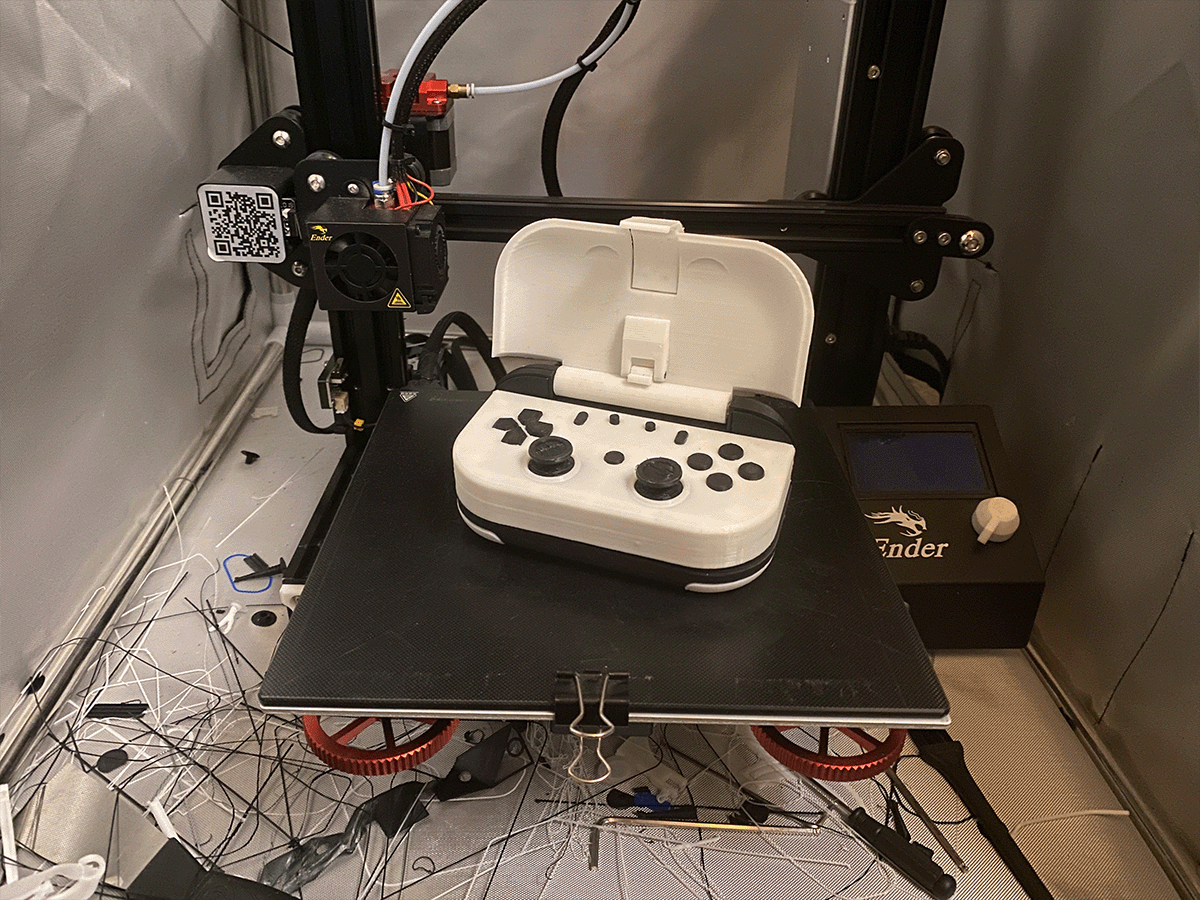
Charlie Sheehan
I am an enthusiastic and hardworking designer, and I aim to make the the products I design long lasting, enjoyable and functional whilst also being as inclusive as possible.

I am an enthusiastic and hardworking designer, and I aim to make the the products I design long lasting, enjoyable and functional whilst also being as inclusive as possible.

In recent times, an alarming pattern of planned obsolesence has emerged within the games industry, which contributes to the rapidly growing amount of ewaste produced globally. Parallel to this, mobile phones are rapidly becoming a more viable platform for online gaming
This is why I designed Outlast, a sustainable, modular controller designed to utilize the current advancements in mobile gaming, such as cloud gaming, to turn it into a portable console.






One of Outlast’s key goals is to have as long a life cycle as possible. It does this by empowering the user to repair the product instead of replacing it, should any faults arise.
To do this, it uses the Outlast app, which not only acts as a UI to sort all downloaded games and software, but also has a AI powered search engine (trained on past users problems and solutions) which will help provide solutions for broken parts.
These solutions tend to be split into 3 types, ranked by what you should do first:
Refit – Clean/Refit the part to make sure it is not out of place.
Repair – Watch a guided video on how to repair the broken components.
Replace – Buy a replacement component from the online store, and send the broken one back for a reduction in price.
Outlast has a variety of preset layouts, each fo which saves user data, allowing for families to share one device with many presets. The website will offer a range of additional side-mounting modules in the future, ranging from an arcade-sticks to steering wheels.
A range of the parts can be purchased in a variety of colors, which empowers the user to mix and match colored components, making their Outlast feel more personalized. This is of particular importance, as the mobile phone cases are also an additional element of personalization that the Outlast controller should adapt too.






